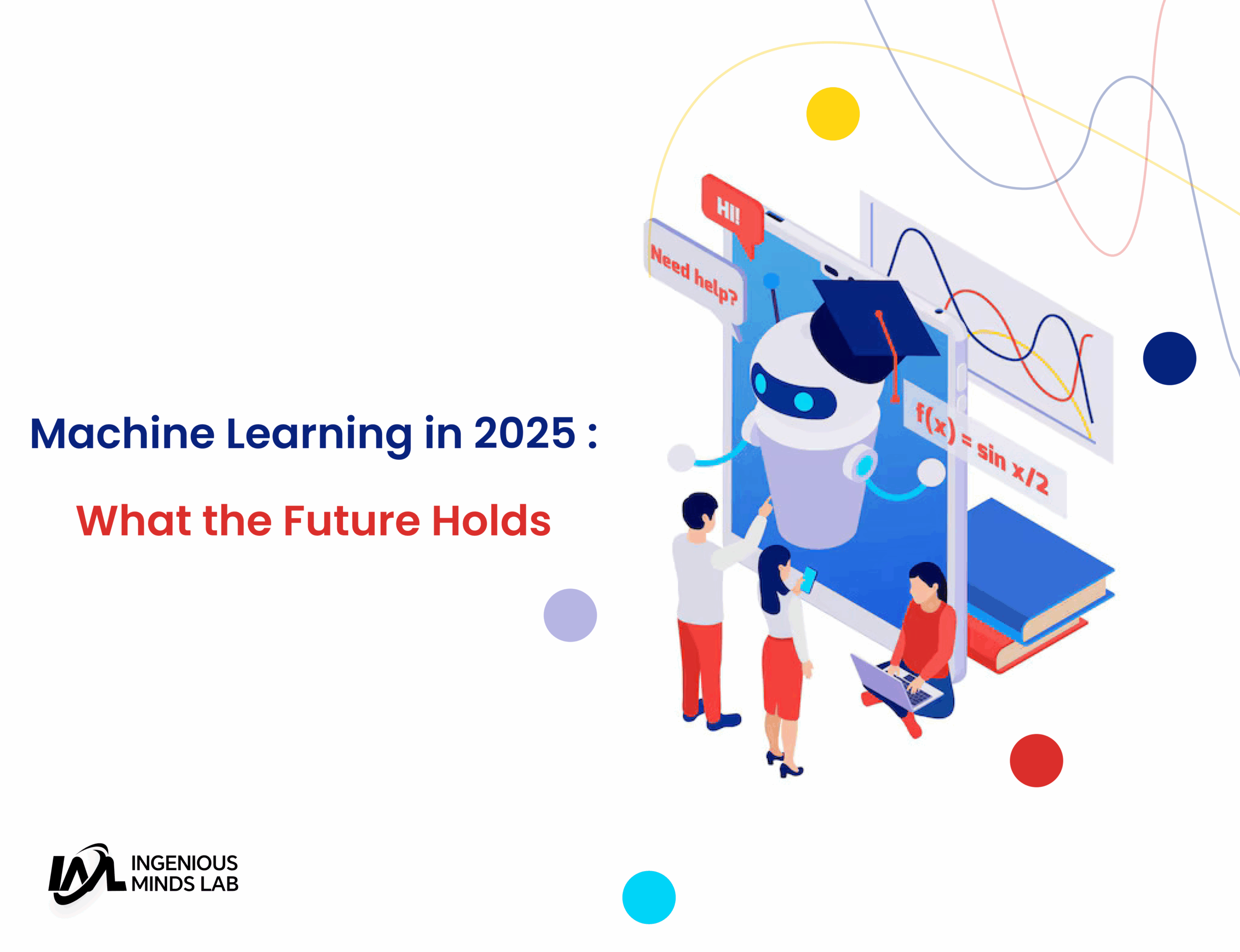The world of artificial intelligence is evolving fast, and at the center of this revolution is Machine Learning in 2025. No longer just a buzzword, machine learning is now driving real-world innovation across healthcare, finance, transportation, education, and more.
As we enter a new era of intelligent systems, Machine Learning in 2025 stands as a powerful force shaping how humans interact with technology. In this blog, we explore how ML has matured, where it’s going next, and what this means for businesses, developers, and everyday users.
What Is Machine Learning in 2025?
Machine Learning in 2025 is not just about algorithms and models—it’s about smart systems that learn, adapt, and improve without being explicitly programmed.
Key changes defining this evolution include:
Greater accessibility: Anyone can now build ML models using no-code platforms.
Real-time learning: Systems continuously learn from new data instead of relying on static models.
Ethical learning: Bias mitigation and transparency are now core components of ML design.
Machine Learning in 2025 goes far beyond academic research—it’s embedded in the tools and systems we use daily.
Top Applications of Machine Learning in 2025
Let’s take a closer look at where Machine Learning in 2025 is making the most impact.
1. Personalized Healthcare
ML is transforming healthcare by enabling:
Predictive diagnostics using patient data and history.
Drug discovery powered by ML simulations and biological modeling.
AI-assisted surgeries and robotic precision guided by machine learning feedback.
Doctors in 2025 rely on ML systems as decision-support tools, improving outcomes and reducing human error.
2. Finance and Fraud Detection
In 2025, financial institutions use Machine Learning to:
Detect fraud in real time by analyzing thousands of transactions per second.
Provide AI-powered financial advice personalized for each user.
Forecast market trends using deep learning on massive financial datasets.
Machine Learning in 2025 plays a critical role in improving financial security and efficiency.
3. Smart Cities and Traffic Management
Smart traffic lights, automated toll systems, and predictive traffic modeling are just the beginning. Machine Learning in 2025 is helping cities:
Optimize waste collection and energy usage.
Predict traffic congestion and reduce accidents.
Improve urban planning through ML-driven simulations.
4. Retail and E-Commerce
Retailers use Machine Learning in 2025 to:
Personalize product recommendations based on browsing behavior.
Manage inventory with predictive analytics.
Detect fake reviews and prevent return fraud.
Customer experience in 2025 is hyper-personalized, all thanks to ML.
5. Education and Learning Platforms
EdTech platforms powered by Machine Learning in 2025 offer:
Adaptive learning paths for students.
Real-time feedback for teachers.
Predictive tools to identify students at risk of falling behind.
Education becomes more inclusive and tailored to individual needs with ML at its core.
Key Trends Driving Machine Learning in 2025
Several trends define how Machine Learning in 2025 is evolving:
1. Democratization of ML
ML tools are now available to non-programmers through platforms like:
Google AutoML
Amazon SageMaker Canvas
Microsoft Azure ML Studio
This democratization means that startups, small businesses, and educators can all harness the power of machine learning without a technical background.
2. Federated and Edge Learning
Instead of sending all data to the cloud, Machine Learning in 2025 takes place on edge devices like smartphones and IoT gadgets. This allows:
Faster decision-making
Greater privacy
Reduced latency
Federated learning also enables models to learn from decentralized data—without compromising user privacy.
3. Explainable AI (XAI)
As ML becomes more integrated into high-stakes industries like healthcare and law, explainability is crucial. In 2025:
Users demand transparency in ML decisions.
Regulations require ML models to justify their outputs.
Tools like LIME and SHAP are commonly used to interpret black-box models.
4. AutoML and Low-Code ML
Developers no longer need to tune hyperparameters manually. AutoML tools handle:
Model selection
Feature engineering
Hyperparameter optimization
With low-code environments, more teams can deploy ML models in days instead of weeks.
Challenges Facing Machine Learning in 2025
Despite the progress, Machine Learning in 2025 still faces challenges:
1. Data Privacy
With stricter data regulations (like GDPR 2.0), ML developers must ensure:
Data is anonymized
Consent is obtained
Models are compliant by design
2. Bias and Fairness
Bias in training data leads to biased predictions. In 2025, companies are under pressure to:
Audit models for bias regularly
Diversify training datasets
Use fairness-aware ML algorithms
3. Environmental Concerns
Training large ML models consumes significant energy. Researchers in 2025 are focused on:
Energy-efficient training methods
Lightweight models for edge devices
Renewable energy-powered data centers
How to Get Started with Machine Learning in 2025
Interested in working with Machine Learning in 2025? Here’s how:
Learn foundational ML concepts using online platforms like Coursera, edX, or Fast.ai.
Experiment with tools like TensorFlow, Scikit-learn, or PyTorch.
Use no-code ML platforms if you’re not technical.
Join communities like Kaggle or Reddit’s r/MachineLearning to stay updated.
There’s never been a better time to explore machine learning, regardless of your background.

